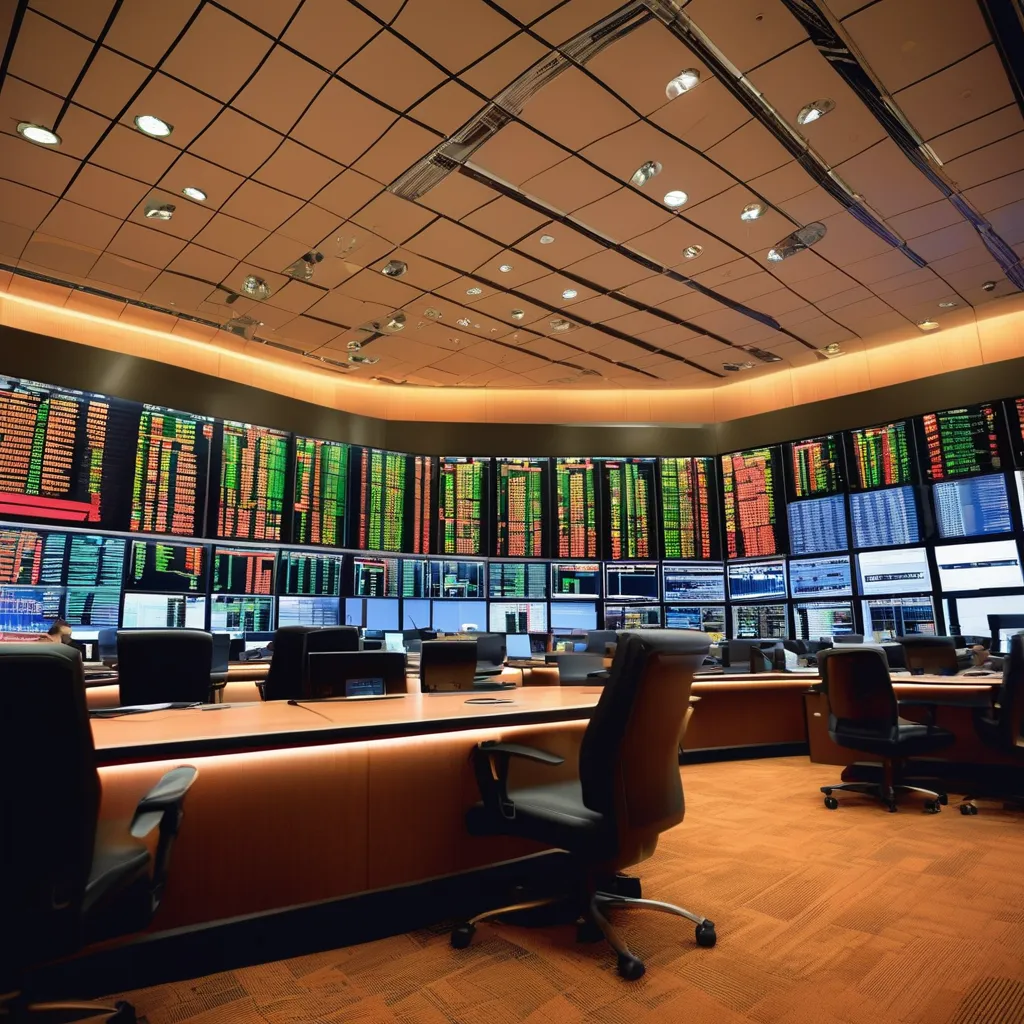The Dow Jones Index: A Comprehensive Guide for Traders and Investors
The Dow Jones Index is one of the most well-known stock indices in the world, featuring the most powerful stocks traded on the New York Stock Exchange (NYSE) and NASDAQ. We all seem to know it’s a good sign when the index rises or that we should be cautious when it declines. But why is that? What is the Dow Jones Index, how can it be used in trading, and can you get your company listed on it? What factors move its prices? These are just a few of the insights you’ll discover in this article about the Dow Jones Index.
As with any other type of index, before you invest and expect your trading strategies to yield profits, it’s essential to gather as much information as possible. In some cases, the Dow Jones might be the best place to invest your financial resources, while in other cases, different types of investments might be more suitable. If you’re interested in trading using the Dow Jones Index, this guide will provide essential steps to help you do so successfully.
What Is the Dow Jones Index? A Definition
The Dow Jones Industrial Average (DJIA) is a price-weighted index composed of 30 of the most influential stocks traded on the U.S. stock market. In theory, these stocks are representative of the broader market. Investors use indices like the Dow Jones to track market trends and gain a focused perspective on what’s happening on the stock exchange. The Dow Jones Index was introduced on May 26, 1896, created by Charles H. Dow, who is also known for the famous Dow Theory. Dow was the founder of Dow Jones & Company, established in 1882. The first Dow index, launched in 1884, consisted of 11 transportation-related stocks. The original index was later adjusted and renamed the Dow Jones Rail Average, and in 1970, it became the Dow Jones Transportation Average.
The Dow Jones Index is one of the oldest indices in the global market, closely monitored by investors to guide their business decisions and stock market trades. In short, if we were to define the Dow Jones, we could say that it’s regarded by investors and media experts as a general snapshot of the U.S. stock market’s performance.
The Dow Jones Index’s Performance Over the Last 10 Years
Looking at the Dow Jones Index’s performance over the past decade, one could easily conclude that the stock market is a fantastic place to trade and invest. However, by broadening your perspective, you might notice that other segments of the stock market have experienced even more significant growth.
The Dow Jones Industrial Average is a price-weighted index, meaning that stocks with higher prices tend to have a disproportionate effect on the index’s value. To better understand how the Dow Jones has evolved over the past 10 years, let’s examine the following scenario: If you had invested $1,000 in the Dow Jones 10 years ago, you would have realized a return of 105.07%, translating to a $1,050 profit. A $1,000 investment over the last 5 years would have yielded a 60.49% return, equivalent to a $604 profit.
Companies in the Dow Jones Index
Currently, 30 companies are included in the Dow Jones Index, all considered among the strongest in the market. These companies are: American Express, IBM, Boeing, The Travelers, Johnson & Johnson, Chevron Corp, Cisco Systems, JP Morgan Chase, Honeywell, Visa, Walmart, Apple, Walt Disney, Verizon, McDonald’s, Merck & Co, 3M Company, Caterpillar, Goldman Sachs, Coca-Cola, UnitedHealth Group, Walgreens Boots Alliance, Salesforce.com, Dow Inc., Intel Corp, Amgen, Procter & Gamble, Nike, The Home Depot, and Microsoft.
Following the 4-to-1 stock split by Apple on August 31, 2020, the technology sector’s weighting in the index decreased significantly. At that time, Salesforce.com, Amgen, and Honeywell were added to the index, replacing Exxon Mobil, Pfizer, and Raytheon Technologies.
How to Trade or Invest in the Dow Jones Index?
The Dow Jones offers traders a high degree of liquidity in response to the volatility of the U.S. market. Trading the Dow does not focus on individual stocks, as it involves a “basket” of American stocks, which provides protection against the volatility of a single company while maintaining broader exposure to the U.S. stock market.
There are three main ways to gain exposure to the Dow Jones Index, each with its own advantages and disadvantages. It’s essential to analyse which method suits your trading style best and choose accordingly. Here are the three methods:
– Direct trading of the Dow Jones Index
– Trading or investing in Dow Jones ETFs
– Trading or investing in individual Dow Jones stocks
Steps for Trading or Investing in the Dow Jones 30
If you’re ready to trade the Dow Jones 30, you’ll need to follow a series of steps:
– Create your trading account on a reputable platform
– Learn what drives the Dow Jones Index’s price movements
– Refine your strategies for trading the Dow Jones
– Familiarize yourself with the index’s components
– Learn how the index is calculated and understand the price weightings
– Know the trading hours for the Dow Jones
At first glance, it may seem like you need extensive knowledge to trade the Dow Jones, but these initial steps are crucial to building a solid foundation. As with any field, experience comes from learning and applying your knowledge.
Factors That Influence Dow Jones Price Movements
To profit from the Dow Jones, you need to know when to open and close positions. To do this, it’s essential to understand the factors that influence the index’s price. The most critical factors are:
– The strength of the U.S. dollar: A strong dollar often means the index will rise, while a weaker dollar can signal a decline.
– The value of the stocks in the Dow Jones Index: Since the index is composed of stocks from the NYSE and NASDAQ, the prices of these stocks directly affect the index.
– Earnings reports: As with individual stocks, earnings reports impact the index’s performance.
– Economic events: Not only do the companies within the index impact the Dow, but macroeconomic factors do as well.
– News: Macroeconomic events, such as announcements from central banks, fiscal policy changes, and major world events, can significantly affect the Dow Jones.
Perfecting Your Dow Jones Trading Strategies
To maximize your success when trading an index, there are several strategies you can employ. First, it’s essential to choose a trading style that best suits you. Then, learn how to interpret daily and weekly charts using Japanese candlesticks, which will help you understand market rhythms and predict the index’s future movements.
Another critical aspect is learning how to identify trading signals. Once you know how to identify and confirm trading signals, you’ll have a better idea of when to buy or sell. Finally, it’s crucial to stay informed about economic news. Don’t rely solely on technical analysis, as significant macroeconomic events can profoundly impact the market.
Trading Styles for the Dow Jones Index
The Dow Jones 30 Index lends itself to various trading styles, including scalping, day trading, and swing trading:
– Scalping and day trading on DJI30 via CFDs: For traders seeking quick results, these methods allow them to work on shorter timeframes. However, these approaches come with both risks and rewards.
– Swing trading on CFD Dow Jones: For those with full-time jobs or those looking for a calmer, more deliberate approach, swing trading may be a good option. This strategy involves spending less time monitoring screens and focusing on identifying trading opportunities over larger time intervals.
For beginners, it’s recommended to start with a demo account to avoid risking capital.
Example of a Dow Jones Trading Strategy
For a buying position, if a trader opens a position at 27,200 points and closes it at 27,250 points, the result is 50 $1 = $50 profit.
For a selling position, if a trader opens a position at 27,100 points and closes it at 27,000, the result is 100 $1 = $100 profit.
The value of a “pip” (the smallest price movement) depends on the number of lots traded on the DJI 30 CFD chart:
– 0.1 lot = $1 per pip
– 1 lot = $10 per pip
– 10 lots = $100 per pip
Best Times for Trading the Dow Jones Index
To trade the Dow Jones Index successfully, you must follow the right trading hours. In U.S. Eastern time, the trading hours for the Dow Jones are from 9:30 AM to 4:00 PM.
However, for optimal trading, it’s crucial to consider U.S. economic news releases, as they can influence the DJI 30 Index CFD’s price movements. Many traders use economic calendars to time their trades around these news releases, which can create substantial market movements.
What to Do When the Dow Jones Index Drops?
As mentioned earlier, the Dow Jones is a price-weighted index. This means that stocks with the highest prices tend to have the most significant impact on the index’s value. If we look at the list of companies included in the index, it’s easy to identify those with the largest stock prices.
You may often hear reports that the Dow Jones has plunged by 428 points, causing widespread concern. Should investors worry when the market drops?
Here are some key things to consider when the Dow Jones Industrial Average drops:
1. Stay calm and avoid panic selling:
Market fluctuations are normal. Reacting emotionally can lead to poor financial decisions.
2. Assess your financial situation and goals:
Review your investment strategy and risk tolerance. Ensure your portfolio aligns with your long-term objectives.
3. Diversify your portfolio:
If you haven’t already, consider spreading investments across different asset classes to reduce risk.
4. Look for buying opportunities:
Market dips can present chances to invest in quality stocks at lower prices.
5. Focus on the long-term:
Remember that historically, markets tend to rise over extended periods despite short-term volatility.
6. Review your defensive positions:
Consider increasing allocation to more stable sectors or assets if you’re concerned about further declines.
7. Consult a financial advisor:
If you’re unsure about your strategy, seek professional advice tailored to your situation.
8. Keep an emergency fund:
Ensure you have liquid savings to cover expenses, so you’re not forced to sell investments at a loss.




Leave a Reply